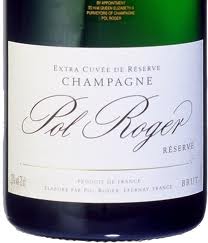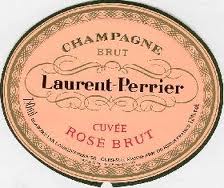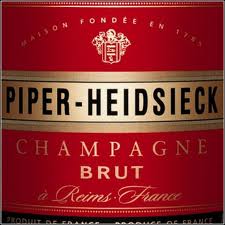Robert Whitley’s Creators Syndicate column for this week.
 It seems like a day doesn’t go by without another breathless press release proclaiming (plug in your wine of choice) the perfect wine for the holidays. One day it’s Argentine Malbec, another day it’s Chilean Carmenere. Or it’s the occasional Sicilian Nero d’Avola, with maybe a Merlot from Lodi, Calif., to cover the domestic front.
It seems like a day doesn’t go by without another breathless press release proclaiming (plug in your wine of choice) the perfect wine for the holidays. One day it’s Argentine Malbec, another day it’s Chilean Carmenere. Or it’s the occasional Sicilian Nero d’Avola, with maybe a Merlot from Lodi, Calif., to cover the domestic front.
Tis the season of blah, blah, blah. I’m sure it’s all good wine if it’s what you like. Personally, I drink Albarino and Gruner Veltliner year-round, no matter the occasion or the outside temp.
Still, there are wines that I most savor around the holidays, especially when there’s a crackling fire and the living room is packed with friends.
On such occasions, it’s always good to have a bottle of Champagne chilled. Only thing better is two bottles of Champagne chilled. That’s my house rule throughout the month of December. I must not be alone, for it’s a fact that nearly half of all Champagne sold in the United States is consumed between Thanksgiving and New Year’s.
This would be a very expensive habit if I served vintage Champagne or the ultra-luxury tetes de cuvee Champagnes, but I reserve those wines for special occasions (anniversaries, birthdays and the like) or lavish dinners. My everyday Champagnes are the non-vintage brut Champagnes from the major Champagne houses — for those are the easiest to source and usually offer the best pricing.
 Non-vintage bruts are blends of several vintages, using at least a splash of the reserves from exceptional years. My personal favorites when I can find them are Pol Roger, Charles Heidsieck Reserve, Bollinger, Laurent Perrier Rose, Deutz and Roederer. I’m also fond of Pommery and Nicolas Feuillatte. And in recent years, Mumm Cordon Rouge and Piper-Heidsieck have found their footing and would be high on anyone’s holiday list, especially for those looking for a great NV bottle at a reasonable price. You will find all of these wines at retail for between $30 and $50.
Non-vintage bruts are blends of several vintages, using at least a splash of the reserves from exceptional years. My personal favorites when I can find them are Pol Roger, Charles Heidsieck Reserve, Bollinger, Laurent Perrier Rose, Deutz and Roederer. I’m also fond of Pommery and Nicolas Feuillatte. And in recent years, Mumm Cordon Rouge and Piper-Heidsieck have found their footing and would be high on anyone’s holiday list, especially for those looking for a great NV bottle at a reasonable price. You will find all of these wines at retail for between $30 and $50.
While Champagne is ideal for raising a glass to toast the season, it’s also a great match for the salty snacks that abound over the holidays.
When I have guests for dinner at this time of year, I almost always serve cheese or dessert.
That’s when I break into my Port stocks.
 There are no hard and fast rules for serving Port, but I do have my preferences. I usually serve vintage Port with cheese and tawny Port with sweets. And the older the vintage Port, the more likely I am to choose cheese that is pungent and aromatic. I have long been a fan of Fonseca Vintage Port because of its spiciness, but I’m equally comfortable with Taylor Fladgate, Quinta do Vesuvio or Dow’s.
There are no hard and fast rules for serving Port, but I do have my preferences. I usually serve vintage Port with cheese and tawny Port with sweets. And the older the vintage Port, the more likely I am to choose cheese that is pungent and aromatic. I have long been a fan of Fonseca Vintage Port because of its spiciness, but I’m equally comfortable with Taylor Fladgate, Quinta do Vesuvio or Dow’s.
If I’m drinking a younger vintage Port or a Late Bottled Vintage, known as LBV, I try to match those with blue cheeses, which seem to tame the tannins of the younger wines. Some may argue that Vintage Port is a better match for chocolates. I don’t necessarily disagree, but I simply prefer them with cheese. A bottle of more recent Vintage Port should cost somewhere between $50 and $100, with older vintages costing much more, depending upon the age and reputation of the vintage. You can find good LBV Ports for $25 or less.
When chocolate or any other sweet is served, I like to match the sweetness of a tawny Port with the dessert. The wine will always suffer if it is less sweet than the dessert being served. Tawny Ports exhibit pronounced caramel and brown spice flavors, and significantly less fruit than you will find in Vintage or LBV Port.
 The older the tawny, the more spice and caramel it will show — making 20-year and 30-year-old tawnies ideal for dishes, such as creme brulee or any dessert with carmelized sugars. My two favorite 20-year-old tawnies are Graham’s and Smith Woodhouse. Those will likely cost you in excess of $50. Sandeman’s tawny is a bit less expensive and generally more widely available.
The older the tawny, the more spice and caramel it will show — making 20-year and 30-year-old tawnies ideal for dishes, such as creme brulee or any dessert with carmelized sugars. My two favorite 20-year-old tawnies are Graham’s and Smith Woodhouse. Those will likely cost you in excess of $50. Sandeman’s tawny is a bit less expensive and generally more widely available.
The beauty of both tawny and vintage Ports is that they can be enjoyed even without food. They make exceptional after-dinner sippers, though I would emphasize the word "sip" for Ports since they are in the range of 20 percent alcohol, which is significantly higher than the percentage of alcohol by volume of a table wine.
I should note that younger tawny is considerably less expensive than older tawny, and stylistically quite different. A 10-year-old tawny, for example, will exhibit more fruit character and candied fruit than a 20-year-old, with less of the brown spice element.
8
